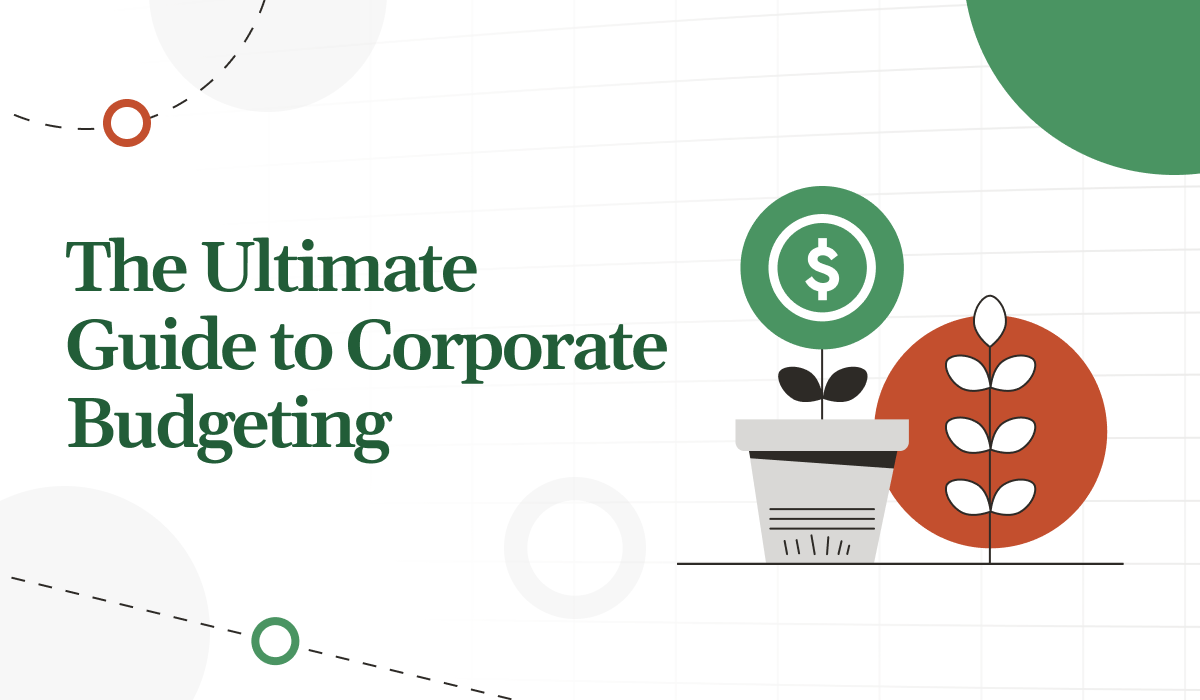Predictive Budgeting Explained
Budgeting helps businesses plan for the future by allocating resources efficiently. But how can you prepare for a future that’s uncertain?
Without clear visibility into what’s ahead, budgets can easily become inefficient or misaligned with strategic goals.
To overcome that challenge, many finance teams are adopting predictive budgeting, a data-driven approach that uses predictive analytics to anticipate future outcomes and strengthen the budgeting process.
Predictive budgeting represents the next evolution of corporate budgeting.
It enables finance teams to look ahead, identify potential risks, and test how their budgets will perform under different conditions. Some organizations use it as a post-budget validation tool, while others integrate it directly into the budgeting process from the start. Either way, it’s quickly becoming a must-have capability for finance teams looking to build smarter, more adaptive budgets.
How Predictive Budgeting Helps Businesses
As a newer methodology, predictive budgeting is often used as a system of oversight--something to compare against as you settle on your final budget. Whether you use it that way or integrate it into your standard budgeting process from the start, it allows you to check assumptions and ensure your budget is on track with future objectives and strategic goals. In doing so, it can help you:
1. Make Cash Flow Projections
By using historical data to fuel your forecasting, you'll be able to better understand the cash flow needed in the budgeting cycle ahead--and make any necessary shifts to your cash flow projections.
2. Identify and Understand Your Critical Drivers
You'll be able to better identify your business' main drivers--then take a deeper dive so that you can fully understand the business activities you can invest in for your optimum financial outcome. This is particularly effective when applied to areas of your plan with rich historical data, giving you a chance to really get into those key drivers.
3. Recognize Areas That Need Attention
Finally, you can also identify any holes in your budget that might set your plans up for failure--and make the necessary changes so that you're poised for success instead.
While all of this might sound great, as with anything new it isn't always easy--at least when you're first starting out. To set yourself up for success, introducing predictive analytics to your budgeting cycle should start by ensuring you have a few key prerequisites in place.
What Are The Pre-Requisites For Predictive Budgeting?
While predictive budgeting has a lot of advantages, there are also a few considerations to take into account before adding it to your budgeting process:
1. You'll Need the Right Team
As the next frontier in planning, predictive budgeting involves creating and applying predictive analytics equations and developing advanced modeling to predict the future using past results. That level of analysis will likely require a specialized team member or extra training for your existing team.
2. You'll Need Access To Data
In order to get to the insights you're looking for and to make your predictions as accurate as possible, you'll require access to data across disparate data sources--including, ideally, at least a few years of historical data. And you'll need to clean and format that data before you can analyze it appropriately to ensure you get the results you need.
3. You'll Need the Right Technology
To get to those answers quickly, you'll also need technology that can help you access the data you need when you need it and apply modeling to see what the future may hold.
With all of those prerequisites in place, you're ready to start adding predictive budgeting to your budgeting process. Consider the following best practices to get started.
Best Practices for Predictive Budgeting
Once you've got everything in line to effectively introduce predictive budgeting, these four best practices will help you get the most out of this next-level budgeting initiative:
1. Start Small--and Make Strategic Choices
As the next big thing in budgeting, there may be expectations on your team to rush into predictive budgeting and start doing everything at once. But that might not be the best approach for you. As something that can be complicated and time consuming to get off the ground, it might be better to start small and make strategic choices. Focus on short-term insights first, for instance, where you'll be able to see your results quicker. Then work your way up to more ambitious plans.
2. Choose the Right Drivers
Predictive budgeting can be a jumping-off point to strategic conversations around your business's future and lead to more insightful decision making overall. To achieve all of that, though, you'll want to make sure you're looking at the right things. Target operational drivers that will empower your business and help you introduce real change.
3. Don't Forget the Human Side
Like all finance functions, predictive budgeting requires a combination of people, processes and tools to be successful--so you don't want to let any of those lag behind. While technology and data may be critical in driving the performance of your predictive budgeting efforts, your team and the instincts they bring to your findings are just as important. It's that combination of human experience and data-driven insights that will put your budget in the best place to thrive.
4. Apply Scenario Modeling
You can combine your predictive budgeting efforts with more detailed and potentially increased scenario modeling in order to better understand the range of possibilities waiting for your organization. In doing so, you'll help your organization stay ready for anything ahead.
Done right--and with the best people, technology and processes in place--predictive budgeting can elevate your budgeting and ensure your business is on the right path to success.
After all, with predictive budgeting, the future is already here.
Discover how Vena can help you build a better budgeting process.
Recommended Resources

The Most Complete Excel-Based Budgeting and Forecasting Software
Learn More